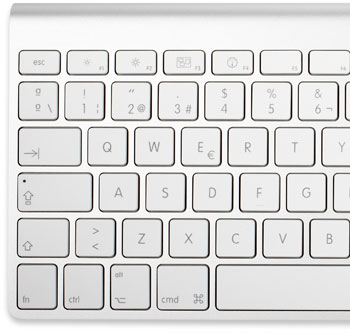- KeyFixer - Fix Your OS X Home And End Keys
- DefaultKeyBinding.dict · GitHub
- My Defaultkeybinding.dict For Macbook Pro
- My Defaultkeybinding.dict For Macbook
Apple Footer. This site contains user submitted content, comments and opinions and is for informational purposes only. Apple may provide or recommend responses as a possible solution based on the information provided; every potential issue may involve several factors not detailed in the conversations captured in an electronic forum and Apple can therefore provide no guarantee as to the. It is possible to create a special file, /Library - KeyBindings - DefaultKeyBinding.dict, which can modify the keyboard shortcuts in every Cocoa text field (which means most text fields in programs on OS X, though not Microsoft Word, or Firefox, or Adobe programs). This is a property list file which lists the actions to be performed with. Aug 04, 2010 Since OS X supports custom key bindings, I looked for a way to fix this. The trick is to create a file called DefaultKeyBinding.dict in the KeyBindings folder inside your Library folder. You can use this file to override the default key bindings for most applications. Here are my changes.
Default keybindings fix for Mac OS X. Adds multiple sign shortkey: control - shift - 8 = ×; Adds deographic space shortkey.
Update august 4th 2011: Behaviour slightly pooped since Lion (Mac OS X 10.7). Now Home and End act as a back and forward button respectively, unless the cursor is within a text field in your browser.
Nothing I tried worked until I installed KeyRemap4MacBook (http://pqrs.org/macosx/keyremap4macbook).
This installs to your preference pane and the option is found under “For PC Users” and is called “Use PC Style Home/End”.
Everything below this point is useless, and only saved for luls.
This is how I altered ~/Library/KeyBindings/DefaultKeyBinding.dict to change the behaviour of the Home and End keys in Mac OS X 10.6.8. (The directory and file did not exist so I had to create them manually.)
KeyFixer - Fix Your OS X Home And End Keys
{
/* Remap Home / End to be correct :-) */
'UF729' = 'moveToBeginningOfLine:'; /* Home */
'UF72B' = 'moveToEndOfLine:'; /* End */
'$UF729' = 'moveToBeginningOfLineAndModifySelection:'; /* Shift + Home */
'$UF72B' = 'moveToEndOfLineAndModifySelection:'; /* Shift + End */
'^UF729' = 'moveToBeginningOfDocument:'; /* Ctrl + Home */
'^UF72B' = 'moveToEndOfDocument:'; /* Ctrl + End */
'$^UF729' = 'moveToBeginningOfDocumentAndModifySelection:'; /* Shift + Ctrl + Home */
'$^UF72B' = 'moveToEndOfDocumentAndModifySelection:'; /* Shift + Ctrl + End */
}


Copied from http://evansweb.info/2005/03/24/mac-os-x-and-home-end-keys
Mac OS X and Home / End keys
The default key bindings for the home and end keys in Mac OS X are different to any other operating system I’ve ever used. By default, they seem to be bound to the viewport, rather than the line of text you are editing. In a multi-line document, the Home key scrolls up to the top of the document, and the End key scrolls down to the bottom. In each case the caret stays where it was.
As a programmer I find this behaviour to be just plain wrong— I want Home and End to move to the start and end of the current line.

DefaultKeyBinding.dict · GitHub
I have found a way to “fix” this problem by editing the default keybindings file,~/Library/KeyBindings/DefaultKeyBinding.dict. Create the directory and / or the file if they’re not already there, and make it look like this:
If there are already entries in DefaultKeyBinding.dict, just add the 4 new mappings above to the main section of your file.
My Defaultkeybinding.dict For Macbook Pro
Other more or less relevant sources:
My Defaultkeybinding.dict For Macbook
- http://www.starryhope.com/tech/apple/2006/keyfixer/ (comments)